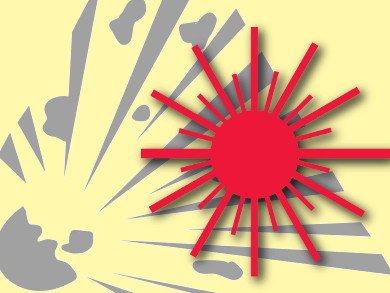There is a great interest in the development of simple yet effective methods for detecting and identifying trace amounts of explosives. Since many explosive compounds have low vapor pressures, they cannot be accurately detected using gas sensors. Picric acid (PA) a nitroaromatic compound, is one example of this category of explosives. Its highly acidic character makes trace-amount detection even more difficult. One approach to improving explosive trace detection is the use of surface-enhanced Raman scattering (SERS), an analytical technique that amplifies the Raman signals of analytes.
Dianzeng Jia, Xinjiang University, Xinjiang, China, and colleagues have developed silver nanoparticle (AgNP)-decorated porous silicon photonic crystals (PS PCs) as efficient SERS substrates. The substrates were used for the determination of trace amounts of PA as well as Rhodamine 6G (R6G). The material is composed of multiple silicon layers of high and low porosity, which were obtained via anodic electrochemical etching. The AgNPs were then integrated into the micropores by an immersion plating technique.
So far, PS PCs had not been investigated in depth for use as SERS sensors. Compared to single-layer porous silicon, the photonic multilayer structure was found to notably enhance the SERS effect in these substrates, leading to an improved detection performance.
The developed SERS sensors have an enhanced sensitivity toward PA, with a detection limit of 10−8 mol/L, and a good reproducibility, with a relative standard deviation of ca. 8 %. For R6G, the detection limit was found to be as low as 10−10 mol/L. These results are very promising and could open up new possibilities for applications in biomedical and environmental sensing.
- Porous Silicon Photonic Crystals Coated with Ag Nanoparticles as Efficient Substrates for Detecting Trace Explosives Using SERS,
Furu Zhong, Zhaofeng Wu, Jixi Guo, Dianzeng Jia,
Nanomaterials 2018.
https://doi.org/10.3390/nano8110872




